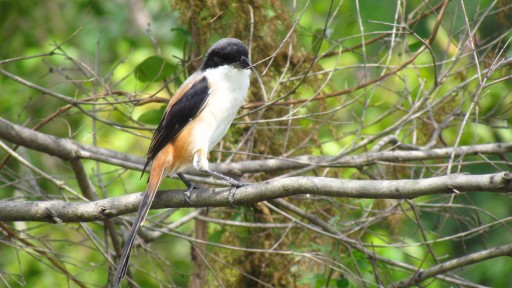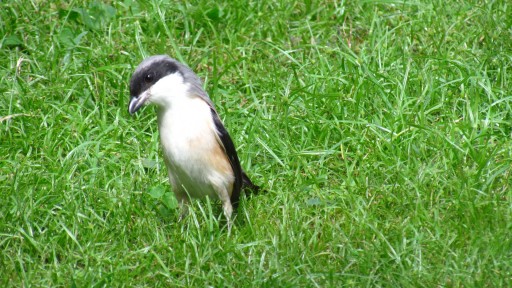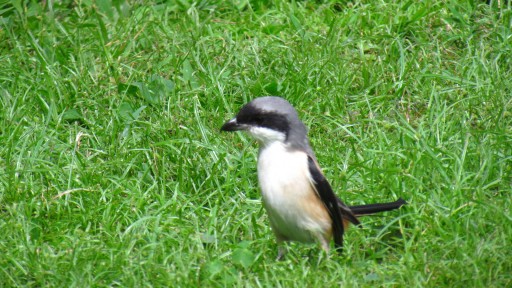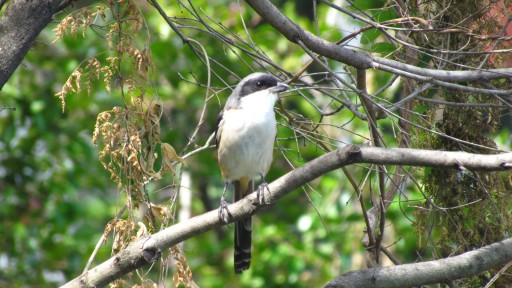Long-Tailed Shrike
Every morning at precisely 5:30, a harsh, loud rattling call of a long-tailed shrike (Lanius schach), gives us an untimely wake-up call. Standing on a branch of a tall tree just outside our first-floor bathroom, this bird is the earliest riser as it makes a quick tour of its territory. There it announces, in no uncertain terms, that this piece of land is its personal hunting ground and completely off-limits to any other member of its species. Personally, I don’t find the natural call of a shrike too unpleasant, but it certainly is a far cry from the lovely singing sound of the resident bulbuls who start their morning concerto about half an hour later.
Although the long-tailed shrike may lack the vocal finesse of other birds in the area, it more than makes up for this deficiency with its stunning looks. It is simply gorgeous! The exceptional colour gradient that turns from brown on its back to pure white on the bird’s chest is lovely to look at while the black “bandit” band that masks its eyes is a great addition to the overall visual impression. Its long tail, with alternative grey and black stripes, is lovely too. The shiny beak and a grey top of the bird’s head add to the magnificent mixture of colours and shapes few other birds in the area are lucky enough to sport.
The first time I noticed this member of the Laniidae family was just over a month ago. At first I thought it was a brown shrike, a visually similar bird which spends its summers as far north as Siberia (where it nests) before returning to the warmer zones of Taiwan and Philippines for winter. But I was wrong – this is a non-migrant shrike which is found in many parts of tropical and subtropical Asia, including Taiwan. It’s a common species, although I only noticed it recently when this particular guy decided to make our garden part of its residence.
I see the shrike frequently, throughout the day. It is a fast and silent flier, often landing sheepishly on lower branches of a tree. From there it searches the ground, looking for prey, usually earthworms or insects (although reportedly it also takes lizards and even small snakes). When it spots one, it flies to the ground at an astonishing speed, picks up the victim and almost immediately returns to the safety of the tree where it consumes the meal. As such, it is hard to photograph the lovely feathered creature, especially as it tends to hide in the foliage. I got really lucky with the above two pictures – the bird stayed on the ground for good 10 – 15 seconds before returning to the tree and I was able to take two decent photographs.
(This page has been viewed 974 times.)




Leave a Reply